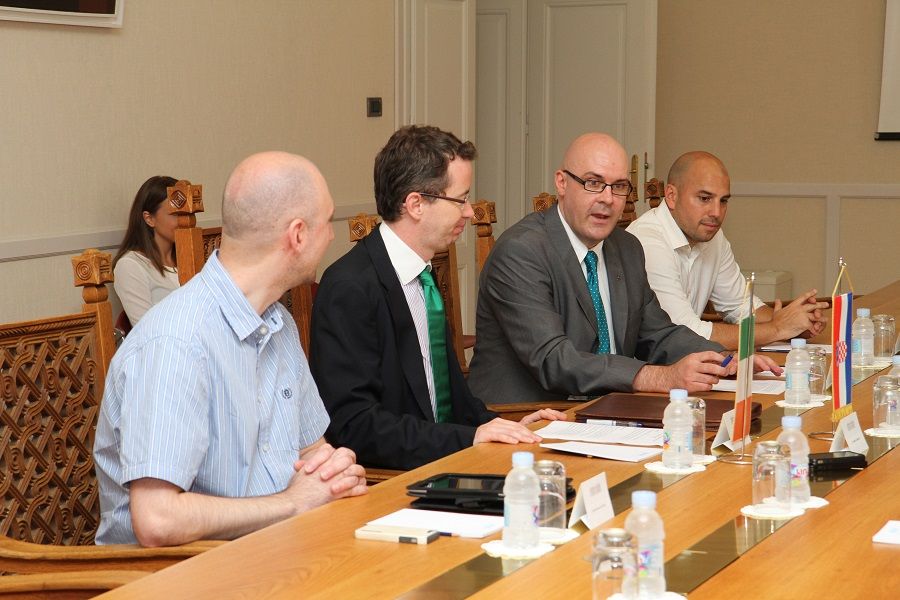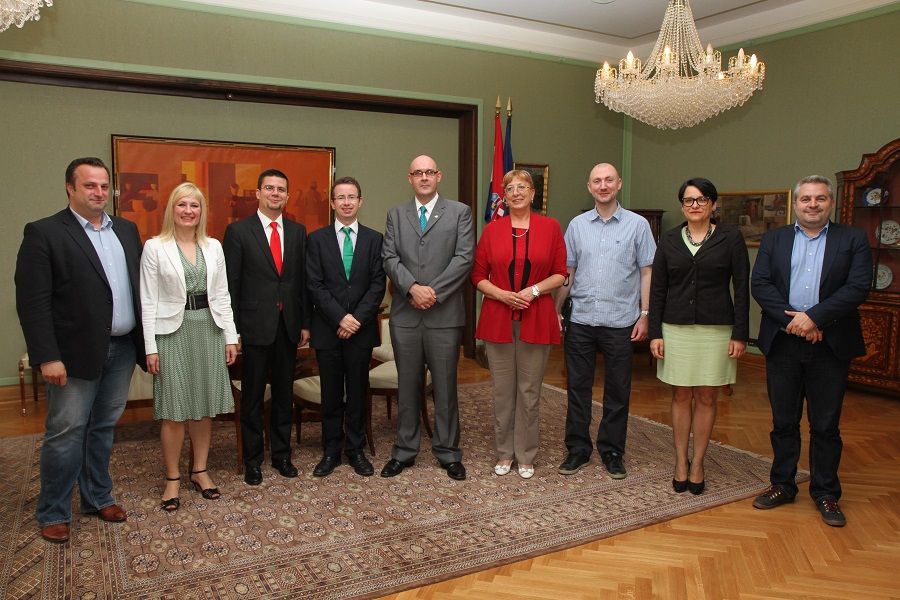What’s in a name? Shakespeare asked us… That which we call a rose, by any other name would smell as sweet. The Bard, clearly, had never been to Croatia.
(Photos are courtesy of the Croatian-Irish Friendship Group)
Earlier this week, Thursday July 2, a small delegation, myself included, sat down with the Croatian-Irish Interparliamentary Friendship Group, chaired by Domagoj Hajduković, primarily for Tim Harrington, first resident Irish Ambassador to Croatia, to meet with a number of MPs, but also to explore the possibility of (re)naming some street (or square or park) after Laval Nugent von Westmeath. Native residents of Rijeka and regulars to Gornji grad in Zagreb might be more familiar with that name than the majority of the readers, so here’s a short history lesson.
Laval Nugent (November 3, 1777 – August 21, 1862) was born in Ireland, in County Westmeath, to Count Michael Anton Nugent, Governor of Prague. Having joined the Austrian army, Nugent found himself campaigning mostly in Italy, and later in Croatia against the forces of Napoleon in Dalmatia. And, like so many visitors in later years, Nugent fell in love with Croatia, buying properties throughout the country, the most notable of which are the castles at Trsat, and Bosiljevo (where he was laid to rest). The castles are now under the care of the Croatian state.

However, as much as it seems warranted, simply being Irish isn’t reason enough for having a street named after you (unless you’re talking about Iran). Nugent, in 1848, as head of the Austrian military forces based in Croatia, and already serving as a member in the Croatian Parliament, recommended that one Josip Jelačić be appointed Ban. The rest, such as a Croatian reader will recognise, is history. Jelačić became Croatia’s first Ban, and promptly set about dismantling any claim Austria and Hungary had on the territory. Nugent, for his part, was wholly behind such a move, and went so far as to declare himself a ‘Croat’. During his 50 years in Croatia Nugent collected an impressive collection of art, much of which remains intact, opening what was to be Croatia’s first museum.
And so, the argument goes that if Jelačić is so prominently represented within Croatian history, then so too should Nugent, the man who purposefully picked Jelačić as the man to take Croatia forward to its next incarnation. Of course, if it comes to pass, it won’t happen anytime soon, as several political groups need to be lobbied, and there’s the matter of consulting with local government and residents. With Ireland’s centenary celebrations of the Easter Rising taking place next year, any street named for an Irishman in the centre of Zagreb would be the place to be over the weekend in question.

And now for a more political angle… It’s not unheard of for streets to be named or renamed in Zagreb (and of course across Croatia). Without wanting to appear too obvious, several streets were renamed as Croatia voted for its independence in 1991… Trg Republika was once again Trg Bana Josipa Jelačića, and one must surely assume that this was widely welcomed. The statue of Jelačić was brought out of storage, and placed on the northern side of the square, facing south (he had previously sat on the south, facing north – towards Austria). Trg Maršala Tita remains unchanged, despite continued calls for it to be returned to a past name, that of Kazalište Trg (Theatre Square). Of course, to many onlookers it’s likely the time has now passed for doing anything about that. If it wasn’t changed in 1991, or 1992, or even in 1995, then why do it at all? The arguments for removing Tito’s name from the square are relatively clear – the Partizans caused no small amount of carnage for the Croatian population – while there are also arguments for leaving it as is – Tito taking power likely prevented Croatia from being sliced and diced by the Allied powers and Serbia in the aftermath of World War II. There will be those who feel that Nugent has no place in Zagreb’s city centre, much in the same way that there were those who felt Jelačič was wrong to accept the title of Ban from an Austrian ruler. This is a process, and will take time. It’ll be interesting to see how it pans out.









